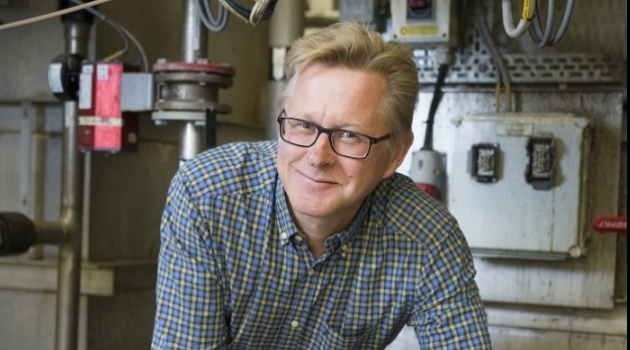Towards more efficient wastewater treatment
With twenty-five years of experience in control engineering, Uppsala professor Bengt Carlsson has mastered the art of controlling processes. This expertise is now being put to use in his role as Chair of the water and sanitation research and education consortium VA-kluster Mälardalen. “I am devoted to showing how our methods in control engineering and modelling can help improve resource efficiency in wastewater treatment.”
In June, the Swedish Water & Wastewater Association (SWWA) approved a three-year extension of its research and education project on wastewater treatment in Mälardalen. The budget for the VA-kluster Mälardalen initiative is SEK 7.5 million, with an additional contribution of SEK 10 million from the participating wastewater treatment plants. Five Universities , two research institutes and eleven wastewater utilities collaborate in the initiative on issues related to wastewater and sludge treatment.
Bengt Carlsson has been Chair of the consortium since its launch in 2010. He sees several reasons why Uppsala University has been entrusted to lead the initiative. For one, the University conducts good research in the area of wastewater engineering. For another, its students are highly coveted in the industry, particularly those in the Master Programme in Environmental and Water Engineering.
“Uppsala is prominent in automation, that is, in helping plants achieve resource-efficient wastewater treatment. We can develop control engineering solutions that don’t waste energy resources and that consistently optimize wastewater treatment.”
Computer program reveals errors
At the Division of Systems and Control in the Department of Information Technology, various collaborations have led to computer programs that use mathematical models to detect faults in sensors. The sensors monitor e.g. pH values and phosphorous and oxygen levels in the wastewater.
“A biological reactor filled with wastewater is a rather unpleasant environment to stick a sensor in,” says Carlsson. “A lot of muck can grow on the sensor membrane. If it’s left there a few weeks, you can imagine what measurement errors can occur.”
“We’ve expanded our expertise in control engineering so that we can also detect and diagnose when instruments are showing incorrect values in connection with water treatment.”
Doctoral students’ solutions save energy
In addition to teaching courses in control engineering, modelling and wastewater treatment, Bengt Carlsson is also responsible for a number of externally employed doctoral students, funded by the wastewater treatment plants. Some of the doctoral students’ automation solutions – in the form of computer programs – are already in full-scale use at the treatment plants to make the treatment processes as resource-efficient as possible.
“To remove impurities from the wastewater, the water in the tanks is oxygenated by blowing in air,” says Carlsson. “The tanks can be almost as big as football pitches and up to ten-fifteen metres deep. Oxygenating these enormous amounts of water requires a lot of energy. You can significantly reduce energy consumption by controlling the aeration depending on the levels of pollution. The control system makes sure that there is just enough oxygen in the water the entire time.”
What are the greatest challenges for water and wastewater treatment today?
“Our use of pharmaceuticals has doubled over the past 20 years, which is increasing our impact on the environment. One challenge is to effectively separate the drug residues in the treatment plants. We can also expect bigger flows to the plants due to urban expansion, and greater precipitation due to climate changes. The greatest challenge is finding ways to cope with future treatment requirements using climate-neutral wastewater treatment plants.”
Carlsson’s closing words are very clear:
“Treating wastewater is great, but making the treatment resource-efficient is even greater.”
FACTS
VA-kluster Mälardalen was founded in 2010 and is one of five project programmes for colleges and universities that receives funding from the Swedish Water & Wastewater Association (SWWA). Additional funding is provided by the consortium’s members and from EU and Swedish governmental research programmes. The consortium has an annual turnover of over SEK 40 million.
Consortium members include Uppsala University, KTH Royal Institute of Technology, Lund University, Mälardalen University, IVL Swedish Environmental Research Institute, JTI - Swedish Institute of Agricultural and Environmental Engineering, Uppsala Vatten, Tekniska Verken in Linköping, SYVAB, Käppala Association, Norrköping Vatten och Avfall, Stockholm Vatten, Eskilstuna Energi & Miljö, Växjö Municipality, Örebro Municipality, MälarEnergi and Enköping Municipality.
Anneli Björkman

